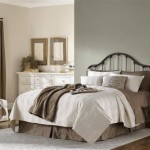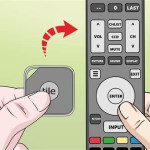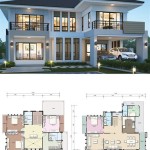Best Pedestal Fans for Bedroom Use: A Comprehensive Guide
Selecting the optimal pedestal fan for bedroom use involves considering several factors, including noise level, airflow, adjustability, and features. The bedroom is a space prioritized for restful sleep and relaxation, necessitating a fan that operates quietly and provides consistent, comfortable airflow. This article examines various models and features to guide the selection of the best pedestal fan for individual bedroom needs.
The primary function of a pedestal fan is to circulate air, which can improve comfort levels and potentially contribute to better sleep quality. Stagnant air can feel stuffy and uncomfortable, especially in warmer climates or during summer months. A well-chosen fan can alleviate this issue by promoting air movement and creating a cooling effect. Furthermore, air circulation can help to distribute air from air conditioning units or heaters more effectively, leading to more consistent temperature throughout the room. The selection process must also consider energy efficiency to minimize operating costs and environmental impact.
Key Considerations for Bedroom Pedestal Fans
When selecting a pedestal fan for the bedroom, several key factors should be taken into account to ensure optimal performance and satisfaction. These factors encompass both functionality and user experience, encompassing noise, airflow, adjustability, and additional features that might enhance usability.
Noise Level
Perhaps the most critical aspect for a bedroom fan is its noise level. A noisy fan can disrupt sleep and make it difficult to relax. Therefore, it is crucial to seek out models specifically designed for quiet operation. Manufacturers often specify the decibel (dB) level of their fans, which can be a helpful indicator. Look for fans with a dB rating of 50 dB or lower for optimal sleep conditions. Features like a "sleep mode" which gradually reduces fan speed and noise are also beneficial. Technologies like brushless DC motors and aerodynamic blade designs can significantly reduce noise output. Customer reviews are often a valuable source of information regarding real-world noise levels, as manufacturer specifications may not always accurately reflect actual performance.
Airflow and Speed Settings
The amount of airflow a fan provides is another important consideration. Different individuals have different preferences for airflow, so a fan with multiple speed settings is ideal. Low settings are suitable for gentle air circulation during sleep, while higher settings can be used for more significant cooling during warmer periods or when the room is unoccupied. Airflow is typically measured in cubic feet per minute (CFM). While a higher CFM generally indicates greater airflow, it’s important to balance this with the noise level at higher speeds. Some fans offer oscillating functions, which distribute air across a wider area, while others have directional airflow for more focused cooling. Assess the room size and personal preferences to determine the appropriate airflow capacity.
Adjustability and Features
A good pedestal fan should offer a range of adjustability options to customize the airflow direction and intensity. Adjustable height is essential, allowing the fan to be positioned optimally for different bed heights or seating arrangements. Tilt adjustment enables directing the airflow up or down, while oscillation provides broader coverage. Some fans include features like remote controls, timers, and pre-programmed modes (e.g., sleep mode, natural breeze mode) that enhance convenience and usability. Remote controls allow for adjustments without getting out of bed, while timers enable the fan to turn off automatically after a set period, conserving energy. Consider the features that are most important based on individual preferences and lifestyle.
Examining Fan Types and Technologies
The technology behind pedestal fans has evolved, leading to various types of models with different performance characteristics. Understanding these types is crucial for informed decision-making.
Traditional AC Motor Fans
Traditional pedestal fans utilize AC (alternating current) motors. These motors are relatively inexpensive and have been the standard in fan design for many years. While they are generally reliable, AC motors tend to be less energy-efficient and produce more noise compared to newer technologies. AC motor fans typically have a limited number of speed settings, usually three or four. These fans are generally the most affordable option but might not be the best choice for those prioritizing quiet operation and energy efficiency.
DC Motor Fans
DC (direct current) motor fans represent a significant advancement in fan technology. DC motors are more energy-efficient than AC motors, consuming significantly less power while delivering comparable airflow. They also operate much more quietly, making them an excellent choice for bedroom use. DC motor fans often feature a wider range of speed settings, offering finer control over airflow. Furthermore, DC motors tend to have a longer lifespan compared to AC motors. While DC motor fans are generally more expensive upfront, the long-term energy savings and enhanced performance can justify the higher cost.
Brushless DC Motor Fans
Brushless DC (BLDC) motor fans represent the pinnacle of fan motor technology. These motors are even more efficient and quieter than standard DC motors. They eliminate the brushes found in conventional DC motors, reducing friction and wear, which further extends the lifespan of the motor. BLDC motor fans often feature advanced control systems, allowing for precise airflow adjustments and sophisticated features like smart home integration. These fans are typically the most expensive option but offer the best performance, quietest operation, and greatest energy savings.
Analyzing Specific Fan Features and Benefits
Beyond the core aspects of noise, airflow, and motor type, several other features can contribute to the overall value and satisfaction of a pedestal fan for bedroom use.
Oscillation and Coverage
Oscillation is a common feature that allows the fan to rotate horizontally, distributing airflow across a wider area. The degree of oscillation can vary between models, with some offering a limited range and others providing full 360-degree rotation. Wide-angle oscillation can be beneficial for larger bedrooms or for those who want to share the airflow with others. Some fans also offer vertical tilt adjustment, allowing the user to direct the airflow up or down. The combination of horizontal oscillation and vertical tilt provides comprehensive air circulation throughout the room.
Remote Control Functionality
A remote control adds convenience and allows for adjustments without having to get out of bed. Remote controls typically allow for adjusting the fan speed, turning the oscillation on or off, and setting a timer. Some advanced remote controls may also include features like sleep mode, natural breeze mode, and display screens that show the current settings. Remote controls can significantly enhance the user experience, especially for those who prefer to adjust the fan settings frequently or who have mobility limitations.
Timer and Sleep Mode
A timer function allows the user to set the fan to turn off automatically after a specified period. This is particularly useful for those who want to fall asleep with the fan on but do not want it to run all night. Sleep mode is a pre-programmed setting that gradually reduces the fan speed and noise level over time, creating a more comfortable sleep environment. Sleep mode can also help conserve energy by reducing the fan's power consumption during the night.
Air Purification and Filtration
Some pedestal fans include air purification or filtration features. These fans incorporate filters that capture dust, pollen, and other airborne particles, improving the air quality in the bedroom. HEPA filters are particularly effective at removing small particles, making them suitable for individuals with allergies or respiratory sensitivities. While a pedestal fan with air purification capabilities is not a substitute for a dedicated air purifier, it can provide an added benefit for those concerned about indoor air quality. The frequency of filter replacement will vary depending on the model and the air quality in the environment.
Smart Home Integration
Increasingly, pedestal fans are incorporating smart home integration, allowing them to be controlled via smartphone apps or voice assistants like Amazon Alexa or Google Assistant. Smart fans can be controlled remotely, allowing the user to turn the fan on or off, adjust the speed, and set a timer from anywhere with an internet connection. Smart home integration can also enable automation, such as scheduling the fan to turn on or off at specific times or integrating it with other smart home devices. This level of control and automation can further enhance convenience and energy efficiency.

The 11 Best Pedestal Fans Top Cooling

9 Best Fans Of 2025 Tested Reviewed

The 5 Best Fans Of 2025 Reviews By Wirecutter

The 7 Best Pedestal Fans For Staying Cool Tested By Bob Vila

What To Know Before Buying A Pedestal Or Tower Fan Choice

Best Pedestal Fan Quiet Reliable And Budget Picks Mumsnet

The 15 Best Fans Tried And Tested To Keep You Cool Through A Heatwave At Home Or In Office

The 7 Best Pedestal Fans For Staying Cool Tested By Bob Vila

Fan For Bedroom 120 Oscillating Standing Pedestal Dc Motor 80ft Air C Ebay

The 7 Best Pedestal Fans For Staying Cool Tested By Bob Vila
See Also








